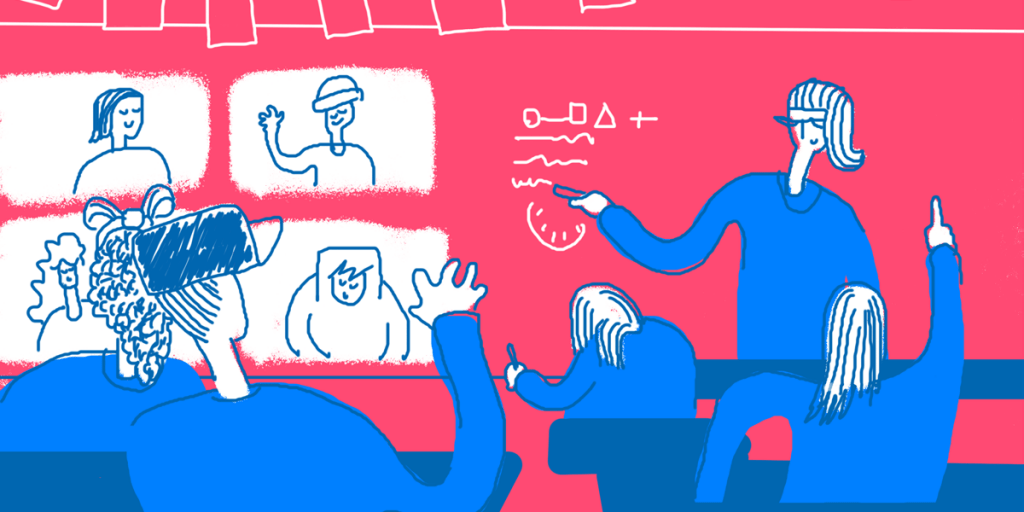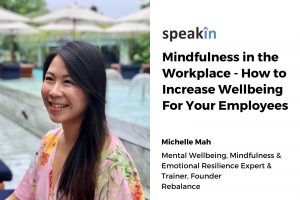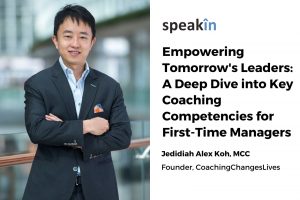The #New #Learning #Normal-How the #COVID-19 #Lockdown has #Disrupted #Education

The COVID – 19 has caused a seismic shift in the field of education, with schools shut across the world. Globally, over 1.2 billion children are at home using e – learning to interact with their teachers.
With this sudden shift away from the classroom in many parts of the globe, some wonder whether the adoption of online learning will continue to persist post-pandemic and how such a shift would impact the worldwide education market.
Even before COVID-19, there was already a growing trend in the adoption of education technology, with global EdTech investments reaching US$18.66 billion in 2019 and the overall market for online education projected to reach $350 Billion by 2025. Whether it is language apps, virtual tutoring, video conferencing tools, or online learning software, there has been a significant surge in usage since COVID-19.
Research suggests that online learning has been shown to increase information retention and take less time, meaning the changes coronavirus has caused might be here to stay.
Personally, I can only wish this paradigm shift had taken place 7 years back when I had taken admission to a part-time Ph.D. program. I was on a high after getting admission as I had qualified through a rigorous written exam and interview for this well-known institute…
As business professionals, we run into day-to-day challenges which are diverse and which challenge your experience levels…We always find a solution to every challenge that comes up and always find ways to keep growing our business… Most of the learnings from each of these experiences would become embedded in our lessons learned mind toolkit and would evolve as thumb rules when we encountered similar situations in the future. Some of these would also become part of the company best practices…
As such, I was looking forward to the programme to learn or identify a successful way in which these learnings could be understood from a research perspective to share these learnings with a wider audience. I had no intention of making a career shift and was also clear that this course was in no way going to help me develop and grow in my career the way I had envisaged it to grow… So the “ jobs to be done” by the program was clear for me and not surprisingly, this was the case of the majority of the people who had enrolled for the programme.
However, what I found in the institute was a modified version of the normal full-time programme…the only difference being that instead of maybe visiting the university for all five days a week you could visit the campus for 10 days which included two weekends once every 2 to 3 months. Everything else, including programme content, delivery, processes, and assessment systems, all remained the same…
While the “ Jobs to be done” were very different for the full-time and part time students, what was being offered by the university was the same.
On the contrary, South New Hampshire University has been successful is which by identifying the right jobs to be done for its students and, as such, has been able to build a huge and profitable business…
Southern New Hampshire University (SNHU), under the leadership of its President Doctor Paul J. LeBlanc, has grown from 2,800 students in 2003 to over 135,000 learners and is the largest non-profit provider of online higher education in the United States.
And the beauty of the story is that previously in 2003, SNHU had run both online and normal programmes as two sides of the same coin… every process from responding to enquiries, financing options to programme delivery were treated in the same way…
It was only when SNHU identified that the requirements (Jobs to be Done) were very different for the people taking the online courses and modified their process to address the same that they became hugely popular and profitable..
The above example further demonstrates the rut our education or learning process has fallen into.
The key parts of the education process are the learning process and the assessment that is done to check if the learner has understood the learnings…
The present teaching delivery that we use is one of mass delivery where the teacher teaches as per a defined curriculum what they feel is the best way to make their students understand the concepts.
You would be surprised to know that this kind of mass education delivery is only 100 years old… when learning originated, it used to be a very personalised way of teaching…We know about Gurukuls in India, the Shaolin temple teachings in China, and about Jesus Christ had twelve disciples.
Here, the students and teachers lived together, and the teacher imparted all his knowledge to his students. This kind of personal teaching was so intense that the teacher knew everything about the student, including his weaknesses.
There is folklore in my Kerala hometown, which was made into a movie called “ Kayamkulam Kochunni” which portrayed the real-life story “ Notorious Thief Kochunni” in the 19th century in the state of Travancore. The movie depicts how “ Kochunni” learned the martial arts and how his teacher knew his student so well that after many years he could still remember the weak points in his defence, which eventually led to his capture.
With the start of industrialization, the need for a more educated and trained workforce started growing… This led to creating the teaching and assessment methods that we know of today. Teaching methods where teachers teach to hundreds of students leading to varying levels of learning and understanding of what is being taught…
Assessment were basically brought about for the below reasons:
- To understand if a person has mastered a subject or material
- To understand if they are ready for progress
- To compare and rank students
- To quantify in a percentage of the subject has been mastered by each student.
As per the assessment method being followed today, a person is promoted to the next level if they score more than 40 or 50% marks. But have you ever considered the implications of that? technically this means that if a person has learned 50% of what was expected of him, he is considered good enough to be shifted to the next level.
What this leads to is people being at the same level of learning administratively while being at different levels in their knowledge level… So we might have a person who is studying in the 10th grade but whose knowledge of algebra would still be at the level of the 8th grade…
Wouldn’t it is great if we could have access to the same personalised learning that we had followed a century ago?
Maybe this unexpected lockdown has set in motion a sequence of events which could very well lead to the same… Due to restricted movement, we have been having online classes for students starting from schools to professional colleges. Teachers, students, and parents have now got used to this. Similarly, assessments also during the lockdown have shifted totally online.
Under normal conditions, this change would have taken us years to bring about. Disruption has indeed taken place.
In response to significant demand, many online learning platforms offer free access to their services, including platforms like BYJU’S, a Bangalore-based educational technology and online tutoring firm founded in 2011, which is now the world’s most highly valued edtech company. Since announcing free live classes on its Think and Learn app, BYJU’s has seen a 200% increase in the number of new students using its product, according to Mrinal Mohit, the company’s Chief Operating Officer.
Tencent classroom has been used extensively since mid-February after the Chinese government instructed a quarter of a billion full-time students to resume their studies through online platforms. This resulted in the largest “ online movement” in the history of education with approximately 730,000, or 81% of K-12 students, attending classes via the Tencent K-12 Online School in Wuhan.
Educational platforms are poised to become the next growth story… Udemy, an education platform revenues, have doubled in the first quarter of the financial year 2020 … this trend is only likely to grow… The growth of platforms like Udemy is also likely to bring in two sets of non-consumers into the education space.
Platforms like Udemy provides the option to anyone, including individuals, to upload and sell courses on their platforms. Many of these courses are very short-term and skill-related, which would not be offered by any university.
This is addressing two types of non-consumption.
It prompts several working professionals to take these courses offered to build on their skill levels. It provides a platform for industry professionals with wide experience but who are not from the traditional teaching faculty to build courses based on their industry experience…It has even started a trend where students create teaching material for other students..
Also, companies like Coursera have been offering 30,000 courses free for about 1000 students at each college. During the initial phases, several institutions also were not really aligned to take up online teaching. These institutions have grabbed this opportunity with both hands. COVID has brought about a huge sampling for their courses which would have otherwise taken years to accomplish…
Companies like Google have also established their intentions to get aggressive in this space… This will also lead to better and more efficient products coming out in the personalised learning space… Also, several companies have launched education products which are targeted at providing learnings based on the present learning levels of the students…Like I said in my earlier example, we might have a student in 10th grade whose algebra knowledge would still be at that of 8th grade… With these personalised learning products, the learning could actually restart from the 8th-grade level.
The supporting networks in a system are what we call the Value Networks…These two stand to be disrupted.
In the case of the educational system, these would include the following
Textbooks which will include people writing the prescribed textbooks and agencies involved in printing and the Sale and Distribution of these textbooks
National, State, and Local Boards who decide the curriculum to be followed for each course, the institutes which get approved and affiliated, the number of seats that each institute can offer for each approved course, the norms for faculty, the content delivery for each student, the testing and the teachers training.
As we move away from the present teaching and learning methods, these value networks also will undergo and change and will need to modify to suit the new normal. One of the biggest hindrances which usually prevent such dramatic changes in the huge power that these value networks wield….
To sum up, this pandemic has utterly disrupted an education system that many assert was already losing its relevance. Major world events are often an inflection point for rapid innovation – a clear example is the rise of e-commerce post-SARS. While we have yet to see whether this will apply to e-learning post-COVID-19, it is one of the few sectors where investment has not dried up.
I am reminded of the interesting study on the US and Japanese car company assembly lines done by Steven Spear…
In this study, the Americans were trying to understand what made the Toyota assembly line so much better when they had imbibed the concept of the assembly line from the Japanese.
The difference was in the implementation ..when the US car companies implemented the assembly line, a recruit would be provided training on the 10 steps of the assembly line that he would have to do on the first day, and he would be on the line from the next day..
At the Toyota line, however, if the first step that the recruit would have to do would be to put the front driver seat in its position, he would be tasked to do that activity it reached perfection before more activities were added to his work… So while the US car companies and a large pool of inspectors to recheck all the products coming off the assembly line the Toyota system with hardly any inspectors had a better quality product.at the end of the line.
So while our present learning and education system is like the initial US assembly line, we should evolve into a Toyota kind of learning system…
As we further progress on this path, educational institutions and teaching as we know today will evolve rapidly. Institutes will also face competition from unexpected sources like, say Google… as this is the nature of disruption.
Whether these institutes will adapt to the new normal or get swept away like a Kodak camera or a Nokia Mobile-only time can tell…





